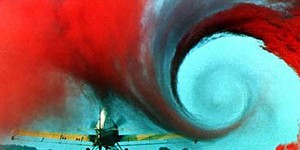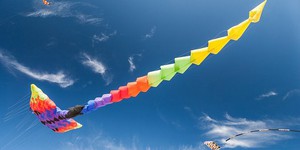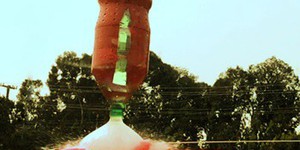Seventh Grade, Aerodynamics & Hydrodynamics Science Projects (29 results)
You've seen for yourself, or in videos, planes flying, rockets hurdling towards space, boats racing through the water and submarines exploring the depths of the ocean. Have you ever stopped and thought about the aerodynamics and hydrodynamics involved in their operation? There is a lot of interesting science that goes into how they work!
|
Select a resource
Sort by
|
Sailboats, tugboats, barges, ocean liners, submarines are all different boats with different shapes. How does the shape of a boat's hull affect how easily it moves through the water? This project shows you how you can investigate this question using a homemade water trough and model boat hulls.
Read more
Featured
Have you heard that garlic powder is supposed to inhibit the growth of bacteria? Which do you think would make a better disinfectant: a solution of garlic powder or a solution of bleach? This project shows you a straightforward way to compare the effectiveness of different disinfectants (or other antimicrobial agents), by measuring zones of inhibition on a culture plate.
Read more
The Wright brothers used kites extensively to test their design ideas in the years leading up to their first successful airplane flight. With this science project, you'll learn about kite aerodynamics, and then come up with your own hypothesis about building or flying a kite. You can test your hypothesis two ways: with an online kite simulation program from NASA, and outdoors with the real thing! A great feature of this science project is that it has many possible variations, so you can decide…
Read more
Have you ever flown in an airplane, or looked up at one flying in the sky, and wondered how such a massive machine can stay in the air? Airplanes can stay in the air because their wings, also referred to as airfoils, generate lift. Engineers use devices called wind tunnels to experiment and test different wing shapes when they design new airplanes. Wind tunnels let engineers make careful measurements of the air flow around the wing, and measure the amount of lift it generates.
If you can get…
Read more
Have you ever noticed how some jet planes have small, vertical projections as the tips of the wings? They're called winglets. What are they there for?
Read more
Flying kites is an excellent way to learn about aerodynamic forces. In this science fair project, you will build and test a variety of kite designs to see which flies best in low wind speeds. You will use an inexpensive anemometer to accurately measure the wind speed. Since you will be choosing which kites to build and test, the experimental procedure provides a general outline for the experiments, but there is a lot of opportunity for you to be creative with your kite designs. This is a DIY…
Read more
Rocket design and operation is a fascinating field and analyzing the flight path provides insight into the rocket's performance. In this project, you will take measurements of the flight path to evaluate how a change in the rocket design or launch procedure impacts the rocket's performance.
Initially, while the bottle rocket expels water (or the rocket expels exhaust), the rocket gets a boost. This push is referred to as thrust and projects the rocket forward. Earth's gravity pulls the…
Read more
You have probably made plenty of regular paper airplanes simply by folding a piece of printer or notebook paper. Have you ever tried making a "high performance" paper glider? These gliders use a different construction technique that involves cutting multiple shapes out of thicker, stiffer paper and gluing them together (this process is called lamination). There are many resources online that can get you started with the art of making high performance paper gliders. See the references in the…
Read more
If you've played catch with both Aerobie flying rings and Frisbees, you know that the rings fly much further than the Frisbees with the same throwing effort. Why is that? Investigate the aerodynamics of flying rings and flying disks and find out!
Read more
Race car drivers need every advantage they can get to give them the competitive edge in a race. In addition to human factors, like driving skill and reaction time, their cars must overcome physical forces, like air resistance, to maintain their high speeds. While this science project will not have you driving around a race track at 200 miles per hour, you will get to test how increased air resistance affects a real car's fuel economy. You will do this by measuring and comparing the gas mileage…
Read more
|
Explore Our Science Videos
Make an LED Night-Light
Why Soda Fizzes – Boyle’s Law Demonstration
How to Build a Toy Car - Science Project













